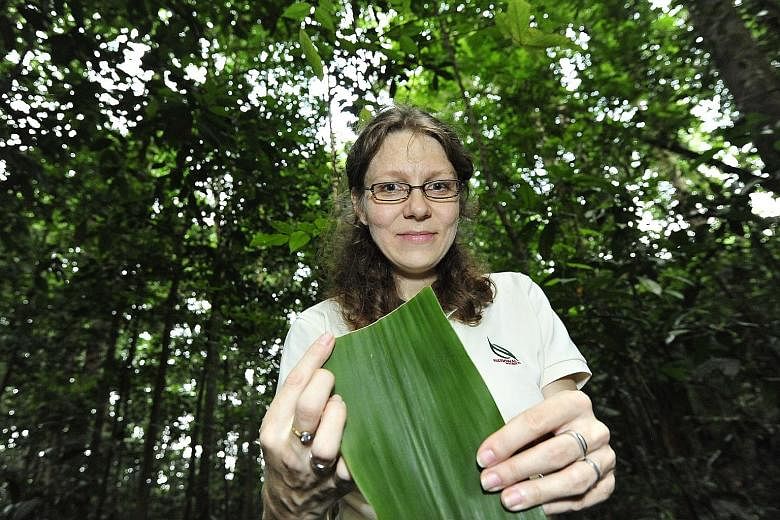For more than a century, 26 plant specimens tucked away in the Singapore Botanic Gardens suffered from a case of mistaken identity.
The flowering herbs had been mislabelled Hanguana malayana, a black-berried plant often found growing by water. It was thought to be the only species of its kind here.
But the true identities and value of the specimens, some of them dating back to 1890, finally came to light last month.
Dr Jana Leong-Skornickova, 40, a biologist at the Gardens, discovered that the specimens were actually two different Hanguana species new to science and unique to Singapore - the Hanguana rubinea and Hanguana triangulata.
The ginger plant specialist stumbled upon the new species while on a routine field survey at the Central Catchment Nature Reserve in 2012.
"When you work on one plant group extensively, you start to notice plants which grow around them, and I noticed the Hanguanas because they have leaves that look like gingers - although they look nothing like gingers when they flower," she said.
While the Hanguana malayana is often found growing around the sunny edges of water bodies, and form large colonies, the Hanguana rubinea and the Hanguana triangulata are solitary species that grow in the understory of the primary forest, said Dr Leong-Skornickova.
"So then the question arose: On the checklist we have only one name, how does that tally with the different species on the ground?"
That was the start of a three-year journey: detecting, describing and classifying the two new species. The process involved making hundreds of field trips, and waiting for the plants in different locations to flower and bear fruit.
The Czech national is married to Singaporean Michael Leong, 53, a stay-at-home dad. They have three children - Matthew, 21; Christopher, 24; and six-year-old daughter Hedvika - who will be joined by a baby girl due in September.
"Discovering new species is my bread and butter," she said.
From the herbarium, she unearthed a dried Hanguana fruit specimen that had been collected by the Singapore Botanic Gardens' first director, Mr Henry Ridley, in 1890.
And when she dug out the seeds, she made a key discovery - they were a different shape, compared to the Hanguana malayana.
On the importance of the discoveries, Dr Leong-Skornickova said: "When it comes to learning about our forests, we have to learn the alphabet before we can learn how to read - if we don't know the basic components of our forests, we cannot study the relationships and interactions in the ecosystem."
Her work is far from over, though. She said the next step is to learn more about pollination, seed dispersal and genetic structure of Singapore's populations through next-generation sequencing, which the Gardens' scientists are working on with researchers from the National University of Singapore.
The National Parks Board's Dr David Middleton, who is also deputy director of research and conservation at the Gardens, said: "In the Singapore context, Hanguanas are good bio-indicators of primary forest as all species occur only within these forested areas.
"The presence of Hanguana species indicates that we have several well-preserved and healthy primary rainforest patches in the Central Catchment Nature Reserve."
The two new species follow last year's discovery of Zingiber singapurense, a ginger plant. So the country can now lay claim to three plant species found nowhere else.
Dr Leong-Skornickova said the recent discoveries could be a result of more manpower and funding for plant taxonomy, and believes that the Gardens' recent listing as a Unesco site will pave the way for more exciting plant discoveries.
"With the listing, we are committed to preserving all this heritage."


